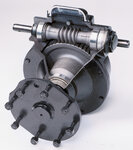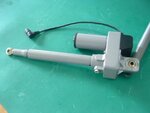jorgechua
Newbie level 2
hi, i need help regarding DC motors...
i have a DC motor, its a power window motor actually. i will be supplying it with 12V lead acid battery. the problem is that it draws 2A current.
how do i pull down the current to at most 0.5A? do you guys know some current limiting circuits??
i have a DC motor, its a power window motor actually. i will be supplying it with 12V lead acid battery. the problem is that it draws 2A current.
how do i pull down the current to at most 0.5A? do you guys know some current limiting circuits??

